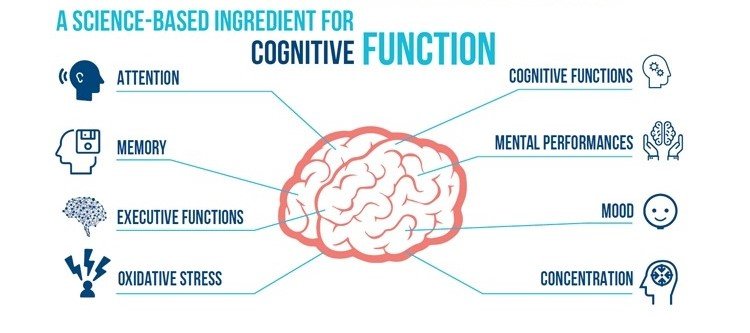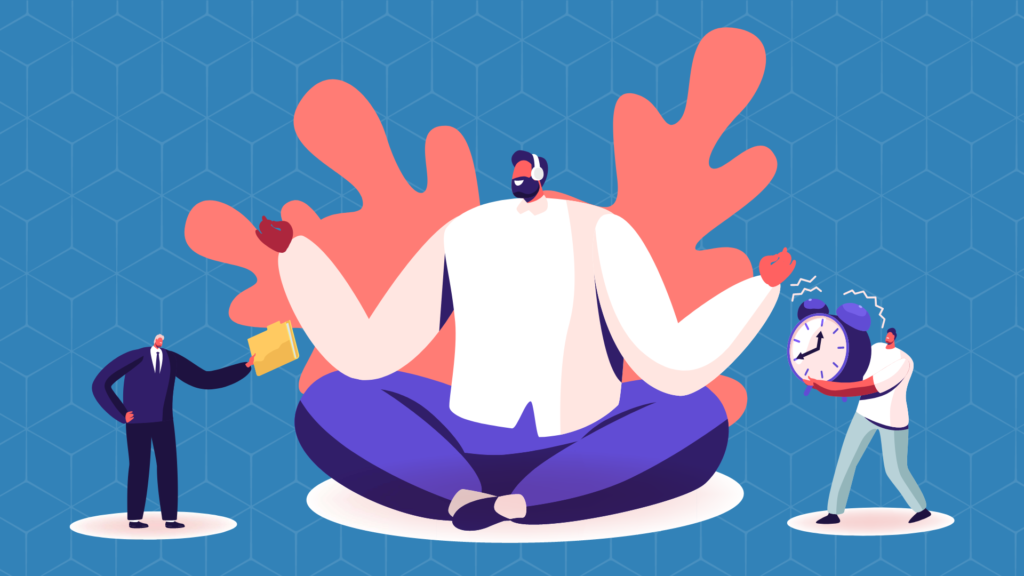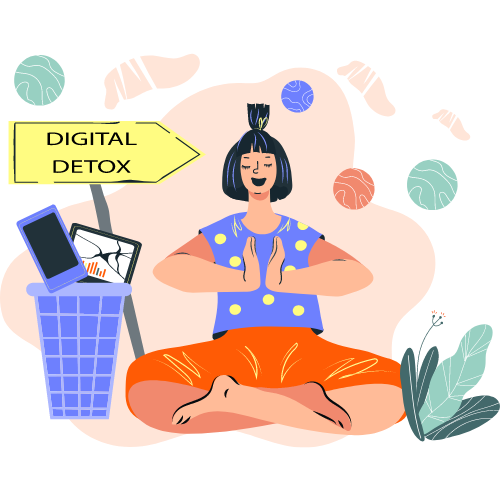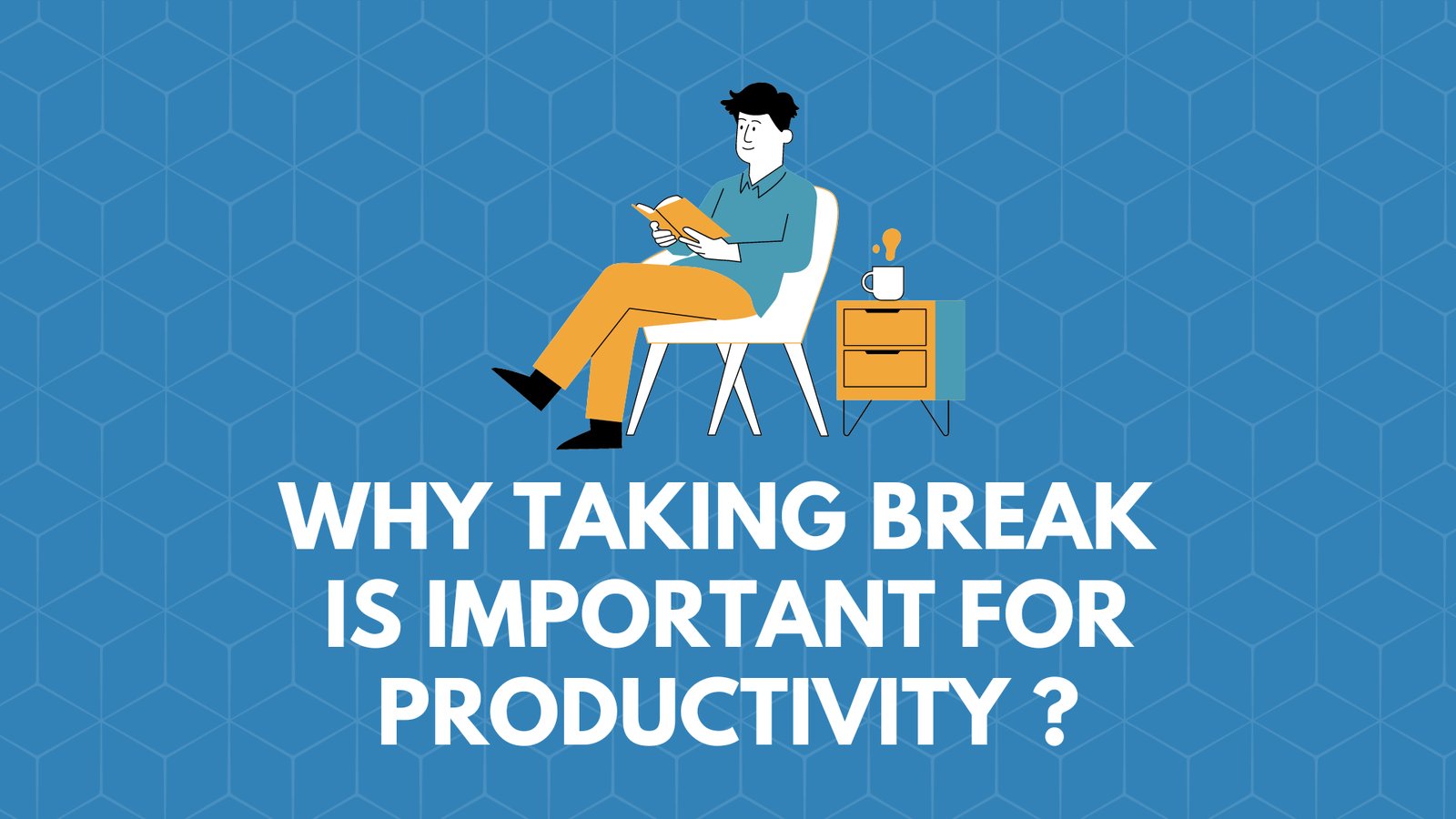In today’s fast-paced and demanding world, productivity has become a highly valued trait. We are constantly striving to accomplish more in less time, often neglecting our need for rest and rejuvenation. However, what many fail to realize is that taking regular breaks is not only essential for our well-being but also a crucial component of maintaining productivity.
In this article, we will delve into the science behind the need for breaks, explore the numerous benefits they provide, and discuss effective strategies for incorporating them into our daily routines. By understanding the importance of taking breaks and learning how to do it effectively, we can optimize our productivity and achieve better overall outcomes.
So, let’s explore why taking breaks is essential for productivity and discover the best ways to implement them into our lives.
The science behind the need for breaks
In our quest for productivity, it’s important to understand the science behind the need for breaks. The human brain operates in fascinating ways, and prolonged periods of continuous work without breaks can have detrimental effects on our cognitive performance.

Cognitive limitations of continuous work:
- Attentional fatigue: The brain’s capacity to sustain focused attention gradually diminishes over time, leading to decreased concentration and increased errors.
- Diminished creativity: Extended periods of intense focus can hinder our ability to think creatively and come up with innovative solutions.
- Decline in decision-making abilities: Mental fatigue can impair our judgment and decision-making skills, resulting in suboptimal choices.
The importance of rest and recovery:
- Restoration of attention and mental energy: Taking breaks allows the brain to replenish its cognitive resources, enhancing focus and concentration for subsequent tasks.
- Activation of the default mode network: During restful periods, the brain’s default mode network becomes active, facilitating creative thinking, problem-solving, and idea generation.
- Consolidation of learning and memory: Research suggests that breaks play a crucial role in consolidating newly acquired information, leading to better retention and recall.
Neurochemical and physiological aspects:
- Stress reduction: Continuous work without breaks can contribute to elevated stress levels, which impairs cognitive function and overall well-being. Taking breaks helps alleviate stress and promotes relaxation.
- Physical well-being: Prolonged sitting and sedentary behavior have been linked to numerous health issues. Breaks provide an opportunity to engage in physical movement, improving blood circulation and reducing the risks associated with prolonged sitting.
Understanding these scientific principles underscores the importance of incorporating regular breaks into our work routines. By doing so, we can optimize our cognitive abilities, promote well-being, and ultimately boost productivity.
Benefits of taking breaks

Taking breaks goes beyond simply giving ourselves a momentary pause from work. It offers a range of benefits that positively impact our productivity, creativity, well-being, and overall work performance. Let’s explore some of the key benefits of incorporating regular breaks into our daily routines:
Breaks help combat attentional fatigue by allowing our minds to recharge and reset.
When we return from a break, we can approach tasks with renewed focus and enhanced concentration.
Taking short breaks at strategic intervals can prevent mental overload and improve sustained attention throughout the day.
Engaging in activities unrelated to work during breaks stimulates divergent thinking, fostering creativity.
Stepping away from a problem or task and returning to it after a break often leads to fresh perspectives and innovative solutions.
The relaxed state of mind during breaks allows our brains to make new connections and generate creative insights.
Breaks provide an opportunity to reduce stress levels and prevent burnout.
Taking regular breaks helps alleviate mental and physical strain, allowing us to return to work with a refreshed mindset.
By managing stress effectively, we can maintain a healthier work-life balance and sustain long-term productivity.
Breaks serve as rewards for completing tasks or milestones, creating a positive reinforcement cycle.
Regular breaks can help maintain motivation and prevent the onset of boredom or monotony.
By allowing ourselves time for activities we enjoy during breaks, we cultivate a sense of fulfillment and engagement in our work.
Incorporating physical movement or exercise into breaks promotes better blood circulation, posture, and overall physical health.
Breaks provide an opportunity to nourish our bodies with healthy snacks, meals, and hydration, contributing to improved energy levels.
Mental and emotional well-being is also nurtured through relaxation techniques, mindfulness exercises, or social interactions during breaks.
By recognizing and embracing these benefits, we can prioritize taking breaks as an essential part of our productivity strategy. Doing so not only enhances our work performance but also contributes to our overall well-being and quality of life.
Effective break strategies
Taking breaks is not just about stepping away from work for a few minutes. It’s essential to utilize our break time effectively to maximize its benefits. Here are some strategies to make your breaks more effective:
- Breaks should be taken at regular intervals to prevent mental fatigue and maintain focus.
- Aim for shorter, frequent breaks rather than a single long break to sustain productivity.
- Experiment with different time intervals to find what works best for you, such as a 5-minute break every 25 minutes or a 15-minute break every hour.
- Physical movement breaks: Engage in light exercise, stretching, or a short walk to get your blood flowing and refresh your body.
- Mindfulness breaks: Practice deep breathing, meditation, or mindfulness exercises to relax your mind, reduce stress, and enhance focus.
- Social breaks: Connect with colleagues, friends, or family members during your breaks to foster social connections and boost mood.
- Communicate your break schedule to colleagues or team members to ensure uninterrupted break time.
- Disconnect from work-related devices and notifications during breaks to prevent distractions and fully recharge.
- Set clear boundaries by letting others know that you are taking a break and should not be disturbed unless it’s an urgent matter.
- Incorporate breaks into your daily schedule as non-negotiable time slots.
- Plan your breaks ahead of time, considering the demands of your tasks and responsibilities.
- Establish a break routine that aligns with your natural energy patterns and productivity peaks.
- Engage in activities during breaks that promote relaxation, creativity, or personal development.
- Read a book, listen to music, engage in a hobby, or explore a passion project to stimulate your mind and provide a mental escape.
- Use breaks to learn something new, whether through online courses, podcasts, or educational content.
By implementing these effective break strategies, you can optimize your break time and make the most of your moments away from work. Remember, breaks are not wasted time but rather crucial investments in your productivity and well-being.
Tips for maximizing productivity during breaks
While breaks are meant for relaxation and rejuvenation, they can also be utilized to enhance overall productivity. Here are some tips for maximizing productivity during your breaks:
Identify specific goals or activities for each break to make them more productive.
Use breaks to complete small, non-work-related tasks, such as responding to personal emails or organizing your workspace.
Allocate time during breaks for planning and prioritizing upcoming tasks to improve efficiency when you return to work.
Practice mindfulness or meditation techniques during breaks to clear your mind and increase focus.
Use apps or guided meditation resources to help you relax and center your thoughts.
Mindful breathing exercises can be done in just a few minutes and can significantly improve mental clarity and productivity.
Engage in physical activities during breaks to boost energy levels and promote blood circulation.
Incorporate short bursts of exercise or stretching routines to release tension and rejuvenate your body.
Consider activities like brisk walking, yoga poses, or desk exercises to increase alertness and productivity.
Use your breaks to nourish your body with nutritious snacks or meals.
Prepare healthy snacks in advance and have them readily available during break times.
Avoid heavy or sugary foods that can cause energy crashes, opting for light, balanced meals that provide sustained energy.
Engage in activities that promote relaxation and reduce stress during breaks.
Listen to calming music, practice deep breathing exercises, or engage in progressive muscle relaxation techniques.
Take a power nap if feasible, as short periods of rest can enhance alertness and cognitive function.

Disconnect from digital devices and screens during breaks to give your eyes and mind a break.
Avoid checking work-related emails or browsing social media, as these activities can hinder relaxation and increase stress levels.
Instead, engage in offline activities like reading a book, doodling, or enjoying nature to recharge your mental batteries.
Remember, the goal of maximizing productivity during breaks is not to overload yourself with additional work but rather to engage in activities that promote mental and physical well-being.
By strategically using your break time, you can enhance your productivity when you return to work and maintain a healthier work-life balance.
Overcoming common challenges
While taking breaks is crucial for productivity, there are often challenges that hinder our ability to incorporate them effectively. Here are some common challenges and strategies for overcoming them:
- Challenge: Feeling guilty or unproductive when taking breaks can discourage us from prioritizing them.
- Solution: Understand that breaks are necessary for maintaining productivity and well-being. Remind yourself that taking breaks actually enhances your overall performance and prevents burnout. Embrace breaks as an essential part of your work routine.
- Challenge: A work environment that values constant busyness or discourages breaks can make it challenging to take them without feeling judged.
- Solution: Advocate for a healthy work culture that recognizes the importance of breaks. Communicate with your colleagues and supervisors about the benefits of taking regular breaks and encourage a supportive environment that values work-life balance and well-being.
- Challenge: Unexpected interruptions or urgent tasks during break time can disrupt your planned relaxation.
- Solution: Communicate your break schedule to colleagues and set clear boundaries. If interruptions occur, politely ask for a moment to finish your break or negotiate a suitable alternative time. Protecting your break time ensures that you can still reap the benefits of relaxation and rejuvenation.
- Challenge: Difficulty in sticking to planned break times or getting easily distracted during breaks can reduce their effectiveness.
- Solution: Set clear intentions and commit to your scheduled breaks. Use tools like timers or productivity apps to remind yourself when it’s time to take a break and when to resume work. Minimize distractions by creating a designated break space or using focus-enhancing techniques like noise-canceling headphones or a Do Not Disturb sign.
- Challenge: Trying to fit too many activities or tasks into a break period can leave you feeling overwhelmed and defeated.
- Solution: Prioritize quality over quantity. Focus on one or two activities during each break that promotes relaxation, rejuvenation, or productivity. Allow yourself enough time to fully engage in those activities without rushing. Remember, breaks are meant to recharge, not add additional stress.
By recognizing and addressing these common challenges, you can overcome barriers to effective break-taking.
Embrace the importance of breaks, advocate for supportive work culture, and cultivate self-discipline to make the most of your break time and optimize your productivity.
Conclusion
In conclusion, taking breaks is not a luxury but a necessity for maintaining productivity and overall well-being. The science behind the need for breaks highlights the limitations of continuous work and the benefits of rest and recovery.
By incorporating effective break strategies, such as timing and duration, engaging in different types of breaks, setting boundaries, and creating a routine, we can optimize our break time. Maximizing productivity during breaks involves purposeful activities, mindfulness, physical movement, healthy nutrition, and restorative practices.
Overcoming challenges like guilt, workplace culture, interruptions, self-discipline, and overloading break time is essential for successfully integrating breaks into our daily routines.
So, prioritize taking breaks, embrace their benefits, and let them fuel your productivity and enhance your overall work performance. Remember, a well-rested and rejuvenated mind is a productive mind.
